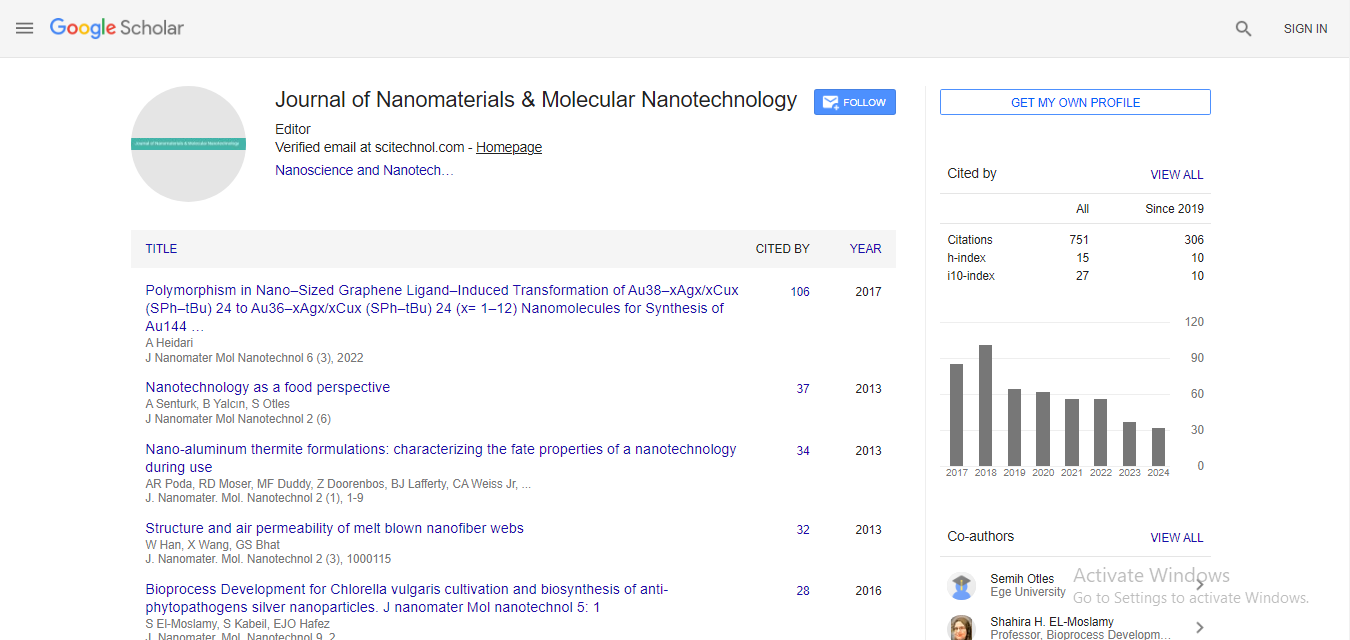Planar magnetic particles for magneto-transduction studies in cell biology
R. Morales,* R. Zurbano, C. Penas, C. Redondo, A. Perez-Valle, I. K. Schuller and M. D. Boyano
University of the Basque Country UPV/EHU, BCMaterials & IKERBASQUE Foundation, Spain.
University of the Basque Country UPV/EHU, Spain.
Center for Advanced Nanoscience & University of California San Diego, USA.
Universi
: J Nanomater Mol Nanotechnol
Abstract
Nanotechnology has allowed the development of novel approaches to fight against medical diseases. Among them, superparamagnetic particles have demonstrated great potential in cell isolation, enhanced magnetic resonance imaging, and localized treatments by magnetic hyperthermia. Recently, new kind of particles with unique magnetic configurations such as vortex state or synthetic antiferromagnets has emerged in biotechnological applications as effective transductors. This contribution presents effective fabrication routes of submicrometric disks with either vortex or antiferromagnetic spin configurations. Interference lithography and electron beam evaporation were used for the fabrication of the nanomagnets. Their low remanence made them suitable for biomedical applications with the enhanced property of a large magnetic moment. Nanodisks biocompatibility was tested in-vitro assays with macrophages and skin cancer cell. No cytotoxicity effects were observed for periods of twenty-four hours. Optical confocal microscopy and scanning electron microscopy reveal a cellular uptake of nanodisks for short incubation times, even though for larger disks of up to a few micrometers in diameter. This result paves the way to investigate magneto-transduction effects in cell biology studies. Work supported by Agencia Estatal de Investigación (AEI) PID2019-104604RB, EU grants H2020- MSCA-734801, GV IT1162-19, and UPV/EHU COLAB20/08. The research at UCSD was supported by the Office of Basic Energy Science, U.S. Department of Energy, BES-DMS funded by the Department of Energy’s Office of Basic Energy Science, DMR under grant DE FG02 87ER-45332
Recent Publications:
1. L. Peixoto, R. Magalhães, D. Navas, S. Moraes, C. Redondo, R. Morales, J. P. Araújo, and C. T. Sousa (2020) Magnetic nanostructures for emerging biomedical applications. Applied Physics Review 7:011310 (https://doi.org/10.1063/1.5121702).
2. B. Mora, A. Perez-Valle, C. Redondo, M. D. Boyano, R. Morales (2018) Cost-Effective Design of High-Magnetic Moment Nanostructures for Biotechnological Applications. ACS Applied Materials & Interfaces 10: 8165. (https://doi.org/10.1021 /acsami.7b16779)
3. E. Ortega, B. Mora, C. Monton, C. Redondo, J. Arellano, R. Morales, E. Voelkl, A. Ponce (2018) Study of Vortex State in Permalloy Plates Using Optimized Electron Holography. Microscopy and Microanalysis 24: 952. (https://doi.org/10.1017/ S1431927618005251)
4. D.-H. Kim et al. (2010) Biofunctionalized magnetic-vortex microdiscs for targeted cancer-cell destruction. Nature Materials 9:165. (https://doi.org/10.1038/NMAT2591)
5. H. Joisten, T. Courcier, P. Balint, P. Sabon, J. Faure-Vincent, S. Auffret, B. Dieny (2010) Self-polarization phenomenon and control of dispersion of synthetic antiferromagnetic nanoparticles for biological applications. 97: 253112 (https://doi.org/10.1063/1.3518702)
Biography
Rafael Morales has a large experience on magnetic properties of thin films, multilayers and nanostructures. He has investigated magnetically coupled systems with ferromagnetic, ferrimagnetic and antiferromagnetic materials. He is interested in both their fundamental phenomena in Physics and novel applications in Biology.
 Spanish
Spanish  Chinese
Chinese  Russian
Russian  German
German  French
French  Japanese
Japanese  Portuguese
Portuguese  Hindi
Hindi 



